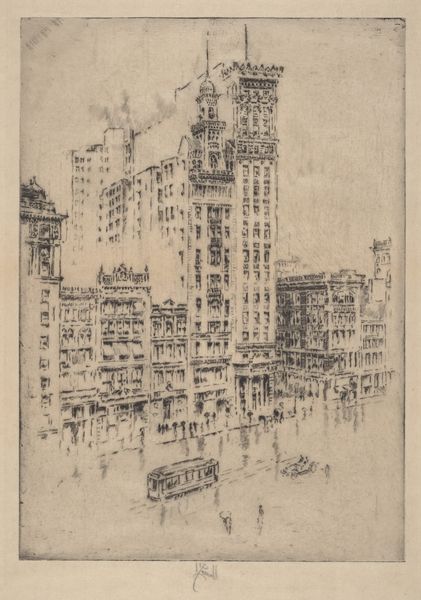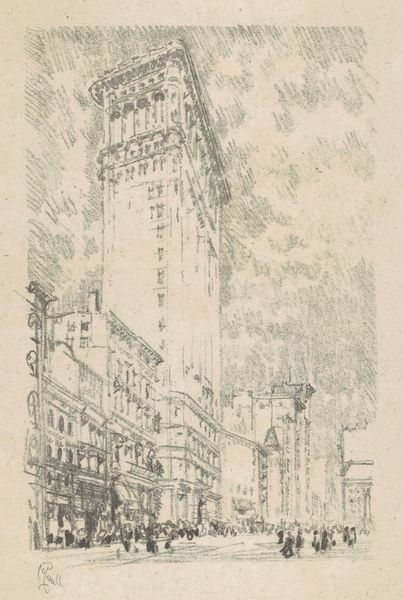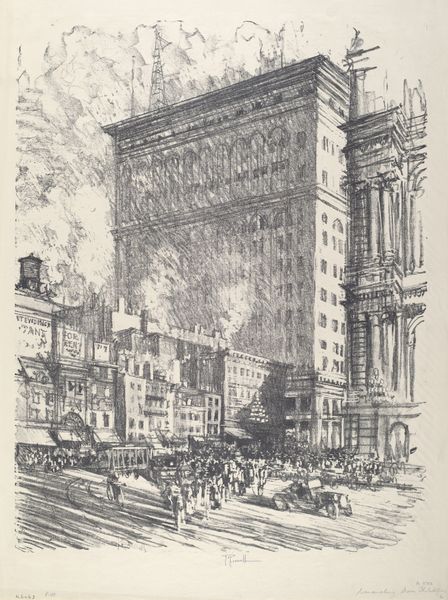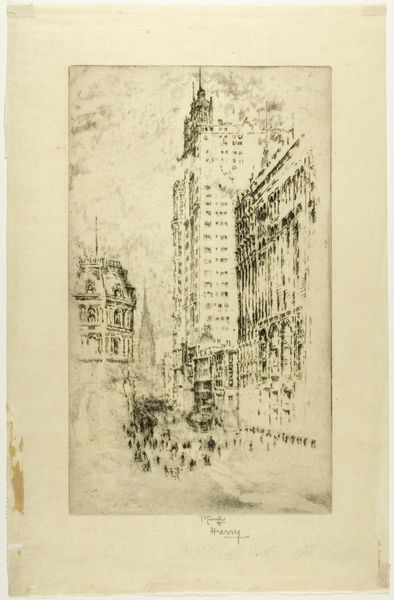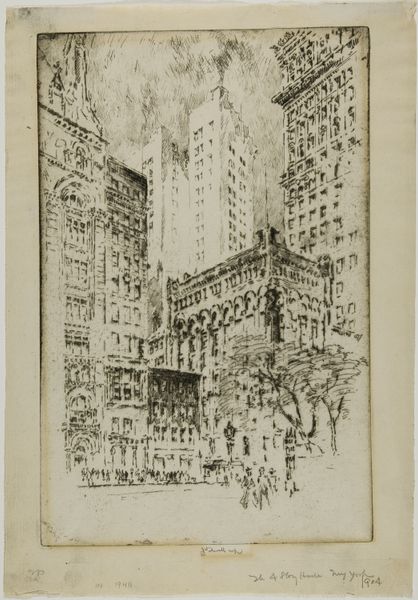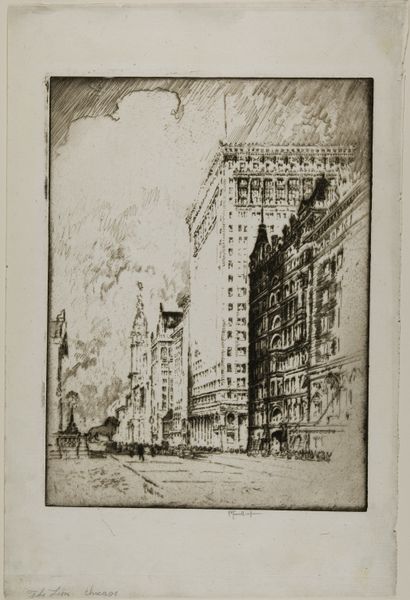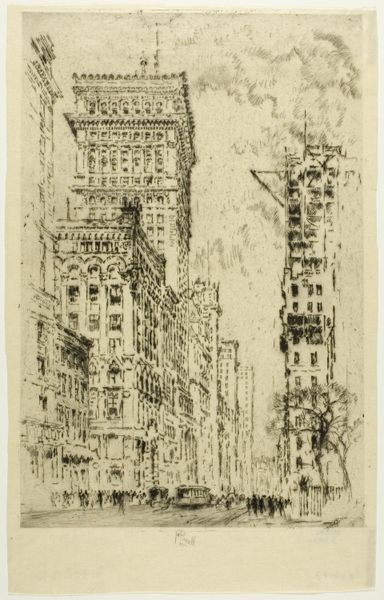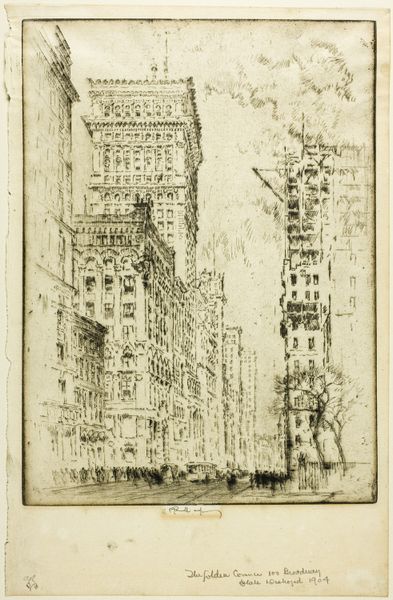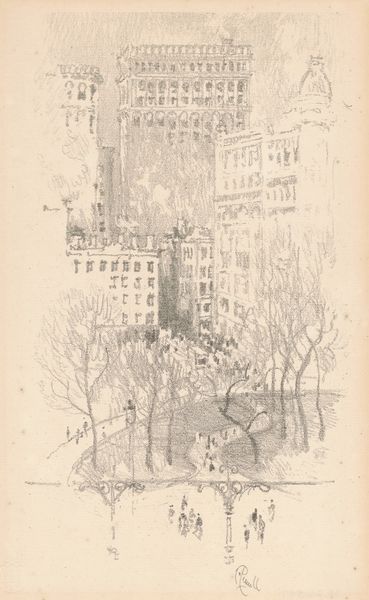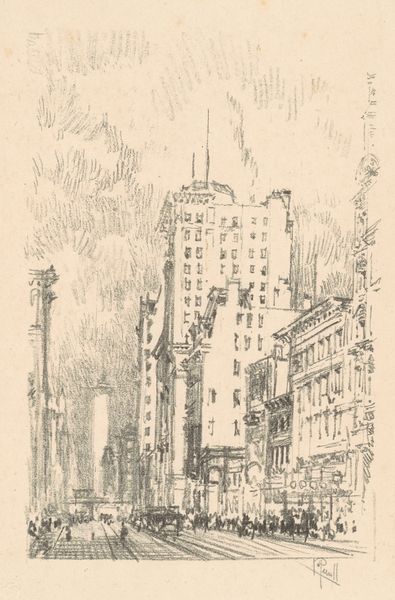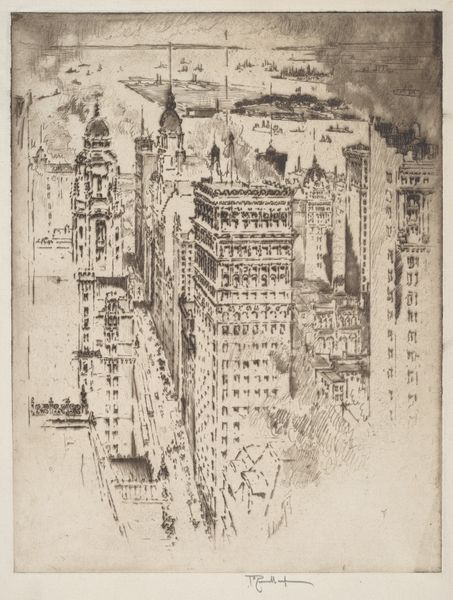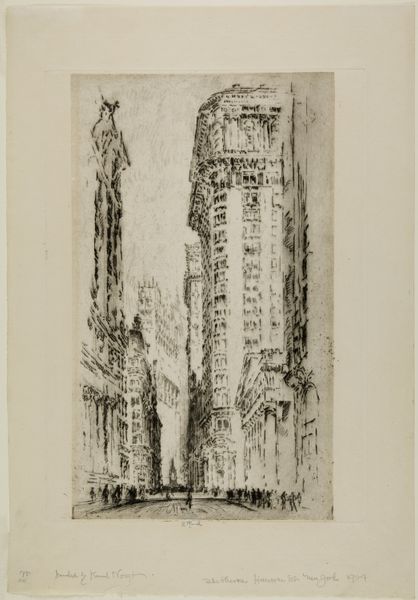
Dimensions: 300 × 214 mm (image); 337 × 227 mm (sheet)
Copyright: Public Domain
Curator: Before us we have Joseph Pennell’s etching entitled, “Union Square and Bank of Metropolis,” created in 1904. The print captures a bustling cityscape, dominated by a monumental building overlooking a verdant park. Editor: It's striking how the building seems to loom, almost oppressively, over the diminutive figures populating Union Square. The contrast in scale feels deliberate, doesn't it? A commentary, perhaps, on early twentieth-century capitalism? Curator: Pennell, deeply involved with the artistic and political currents of his time, presents us with a vision of urban progress but certainly open to multiple interpretations. One can't ignore the influence of the etching revival, embracing printmaking as a valid medium to reflect modern life. It was seen as something beyond mere reproduction. Editor: The print's social commentary is layered, I think. The technique itself, the pen and ink, speaks volumes. There's a fragility to the line work that opposes the imposing Bank of Metropolis. Are we meant to question the supposed stability it projects? How sustainable it actually is, maybe? Curator: Absolutely. Consider also the context of the Ashcan School—artists who portrayed the gritty realities of urban life. Though Pennell’s style leans more towards impressionism than their overt realism, his work reflects similar anxieties. The rapid urbanization, the rising economic disparity. Editor: And look at the figures in the square—mere silhouettes, almost anonymous. Does this etching reflect an unease about individuality, the threat of being lost in the machinery of modern industrial society? Are they specters rather than participants? Curator: Pennell lived through immense socio-economic changes in America, with movements for workers' rights, and women's suffrage on the rise. Viewing art in a museum context means asking questions about its time, and this image helps reflect them through social lenses. Editor: Thinking about how such a historic image resonates with the modern challenges of urban life and the global concerns about economic inequality certainly adds layers of meaning to the print. Curator: I am particularly fascinated by its complex layering and the fact it doesn't just glorify progress. Thank you for sharing that viewpoint with me. Editor: And thank you. These pieces of the past are tools to help understand today. It provides an opportunity to reflect our now and think about the we want from the future.
Comments
No comments
Be the first to comment and join the conversation on the ultimate creative platform.
